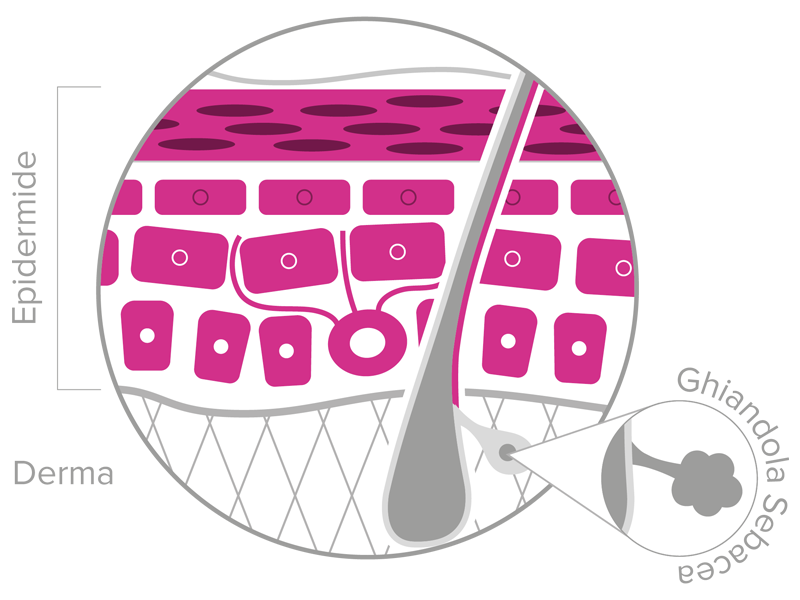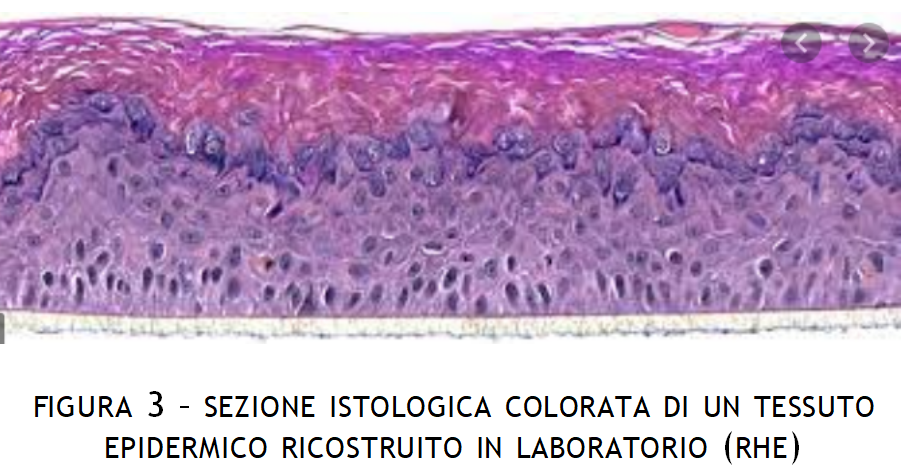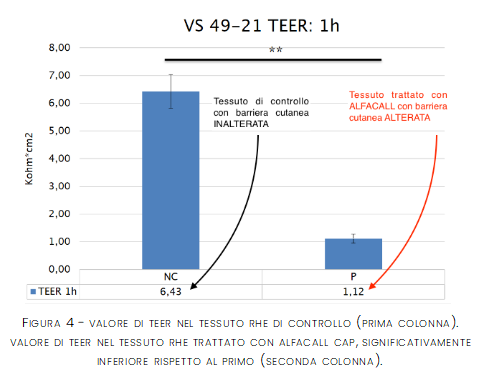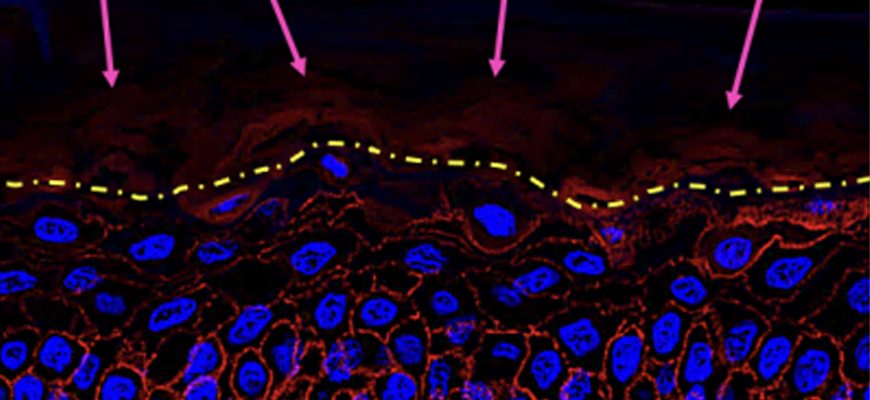Unlock Active Renewing Concentrate and Skin Permeability: The Study
The in vitro test demonstrating the increased penetration capability of a home cosmeceutical routine
The goal of any cosmeceutical protocol is to achieve the best results, tailoring its effectiveness to the needs and characteristics of the skin.
To achieve this, it is essential to ensure a sufficient concentration of active substances at the relevant epidermal and dermal sites. To assess the penetration capability of a cosmeceutical protocol, MyCli relied on Vitroscreen, a leading company in the in vitro evaluation of cosmetic efficacy.
The study demonstrated that Unlock Active Renewing Concentrate can modify the permeability of the skin barrier both functionally and morphologically, without causing any irritative or toxic effects.
MyCli Unlock Active Renewing Concentrate
This is a serum containing three alpha-hydroxy acids: glycolic acid (20% solution), pyruvic acid (2.5% liquid), and lactobionic acid (15% powder). By promoting the exfoliation of the most superficial skin layers, these acids stimulate cellular turnover and enhance skin renewal. These benefits are particularly noticeable on signs of photoaging and chronological aging, such as wrinkles and spots, on the face, neck, décolleté, and hands.
Its role in the cosmeceutical routine is to enhance the effectiveness of any protocol by improving the penetration of subsequent products into the skin while simultaneously stimulating the rapid emergence of younger cells from the basal layer.
Why Use Alpha-Hydroxy Acids?
The trailblazers for truly effective cosmeceutical treatments.

Alpha-hydroxy acids (AHAs) are highly interesting organic compounds. Their action is triggered by the concentration chosen and the pH level of the vehicle. Glycolic acid, pyruvic acid, and lactobionic acid work synergistically to progressively break the bonds between superficial corneocytes, resulting in uniform exfoliation of the surface of the stratum corneum (disjunct layer). Since this action specifically targets the junctions between corneocytes, it does not compromise the health of the epidermis or its protective role.
From a cosmeceutical perspective, the controlled breakdown of the outer epidermal layer is considered a “trailblazing” strategy that facilitates the penetration of all active substances in subsequent products, ultimately achieving improved performance.
Key Points of the Study
To demonstrate the efficacy of Unlock in modulating the epidermal breakdown, MyCli collaborated with Vitroscreen’s research group to conduct a study focused on three key areas:
- Quantification of the Barrier Function and Tissue Resistance of RHE (Reconstructed Human Epidermis): Evaluated through the measurement of Transepithelial Electrical Resistance (TEER).
- Morphology and Tissue Organization Analysis: Performed using Hematoxylin-Eosin (H&E) staining.
- Tissue Permeability Assessment: Based on the integrity of tight junctions (TJs), using the Biotin Assay.
Study Material
Reconstructed Epidermis
Ethical concerns and increasing regulatory restrictions, such as the ban on animal testing for cosmetic ingredients in the European Union, encourage the replacement of human and animal testing with RHE (Reconstructed Human Epidermis) models.
The percutaneous penetration through reconstructed epidermal layers has been tested for various hydrophilic and lipophilic compounds, such as caffeine, testosterone, drugs, vitamins, and essential oils.

SkinEthic™ Reconstructed Human Epidermis (RHE) represents a 3D in vitro model of reconstructed epidermis, measuring 0.5 cm². It is a differentiated epidermis model with a stratified structure similar to in vivo epidermis, formed after 17 days of culture from human keratinocytes obtained from biopsies.
SkinEthic™ 3D epidermal models show great similarity to human skin, allowing for the topical application of raw materials or finished products to evaluate their effects on metabolic activities or, as in this case, their barrier function.
Measurements and Results
15μL of Unlock were applied to the surface of the RHE tissue for 1 hour at room temperature. A control was performed by applying a saline solution (0.9% NaCl) for the same duration and under the same conditions on a second reconstructed tissue.
1. Transepithelial Electrical Resistance (TEER)
The measurement of TEER is a widely used quantitative technique to assess the functional state of tight junctions. TEER values estimate ionic flow resistance across the epithelial layer, providing a measure of barrier functionality in relation to tissue structure and thickness.
Epithelial cells are connected by intercellular junctions that vary in morphology and function. Tight junctions (TJs), in particular, regulate diffusion across membranes and form selectively permeable barriers.
To ensure effective penetration of the functional substances in cosmeceuticals into the deeper epidermal layers, it is necessary to temporarily loosen these junctions without causing irritation or toxicity.
TEER measurements demonstrated increased permeability of the skin barrier to other topical products applied after Unlock Active Pure Concentrate compared to control conditions on RHE tissue.
 TEER values (expressed in Kohm*cm²) significantly decreased in RHE tissue treated with Unlock after just one hour of application. This result indicates increased permeability due to loosening of tight junctions. In contrast, control tissue values remained consistent with known standard data for reconstructed tissues associated with an intact barrier. Further verification confirmed the same result two hours after application, demonstrating sustained biological effects throughout the observation period.
TEER values (expressed in Kohm*cm²) significantly decreased in RHE tissue treated with Unlock after just one hour of application. This result indicates increased permeability due to loosening of tight junctions. In contrast, control tissue values remained consistent with known standard data for reconstructed tissues associated with an intact barrier. Further verification confirmed the same result two hours after application, demonstrating sustained biological effects throughout the observation period.
2. Hematoxylin & Eosin (H&E) Staining
Histological evaluation using Hematoxylin and Eosin stains helps better understand the type of interaction between the tested product and living tissue and assess potential toxic effects.
Tissue sections stained and analyzed by Vitroscreen using an optical microscope clearly showed the action of Unlock Active Renewing Concentrate on RHE tissue.
Representative microscopic images showed that corneocytes were significantly more spaced apart (lower three images) than those in the control tissue (upper three images) without any signs of toxic effects.
3. Biotin Assay
The use of Biotin, or Vitamin B7 (244.3 Dalton), allows for assessing the skin barrier’s permeability in an absorption model from the inside out. Due to its small size, the vitamin penetrates the RHE tissue through the basal compartment following incubation.
When cellular junctions are loosened, the paracellular transit of biotin towards the upper layers increases. This can be detected using an antibody conjugated with streptavidin, a protein with a high affinity for biotin. This interaction forms a red-colored complex visible under a fluorescence microscope. This assay highlights Unlock’s ability to act as a penetration enhancer and a promoter of the emergence of new cells from the basal layer.
CONTROL:
The tissue morphology appears globally preserved, with no modifications observed in barrier function. The tight junctions and the thickness of the stratum corneum remain intact. Biotin does not diffuse through the granular layer as expected.
TISSUE TREATED WITH UNLOCK:
The overall epidermal morphology of the basal, spinous, and granular layers remains unaltered compared to the control. However, the stratum corneum appears less compact, more permeable, and differently stained. Biotin diffuses through the tight junctions into the granular layer (above the yellow dashed line).

PROVEN EFFICACY OF UNLOCK:
Overall, the results highlight the effectiveness of Unlock in increasing the permeability of the epidermal barrier at the tight junction level of the stratum corneum and stimulating the emergence of new cells from the basal layer, without causing irritation or toxic effects.
• Significantly reduced TEER one hour after treatment, remaining low even after two hours.
• Hematoxylin-Eosin staining shows that the treatment induces morphological changes directly in the skin region responsible for barrier function (stratum corneum).
• Increased permeability to Biotin, which diffuses through the tight junctions, underscoring Unlock Active Renewing Concentrate’s ability to facilitate the emergence of new cells from the basal layer and enhance the tissue’s overall permeability.




